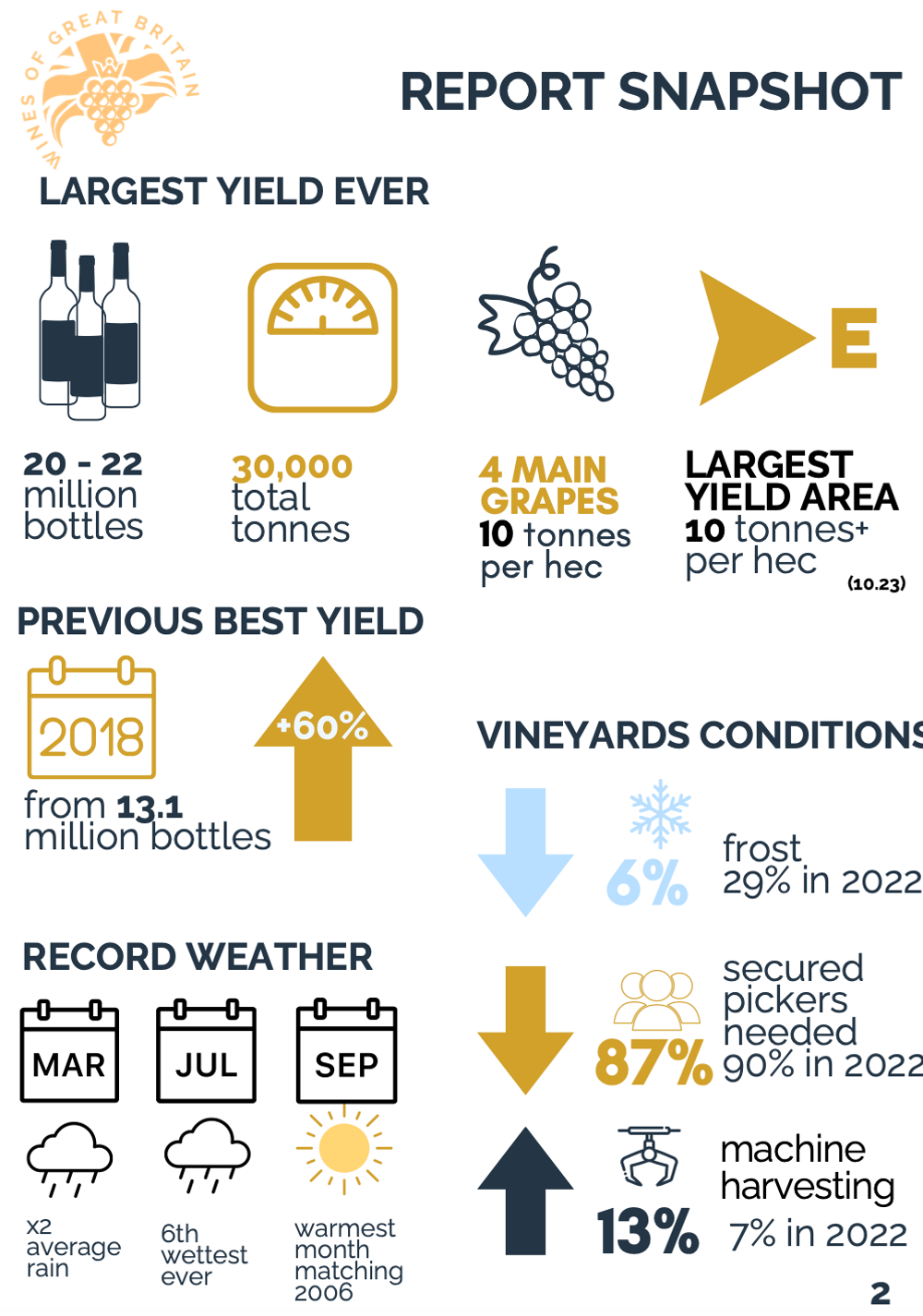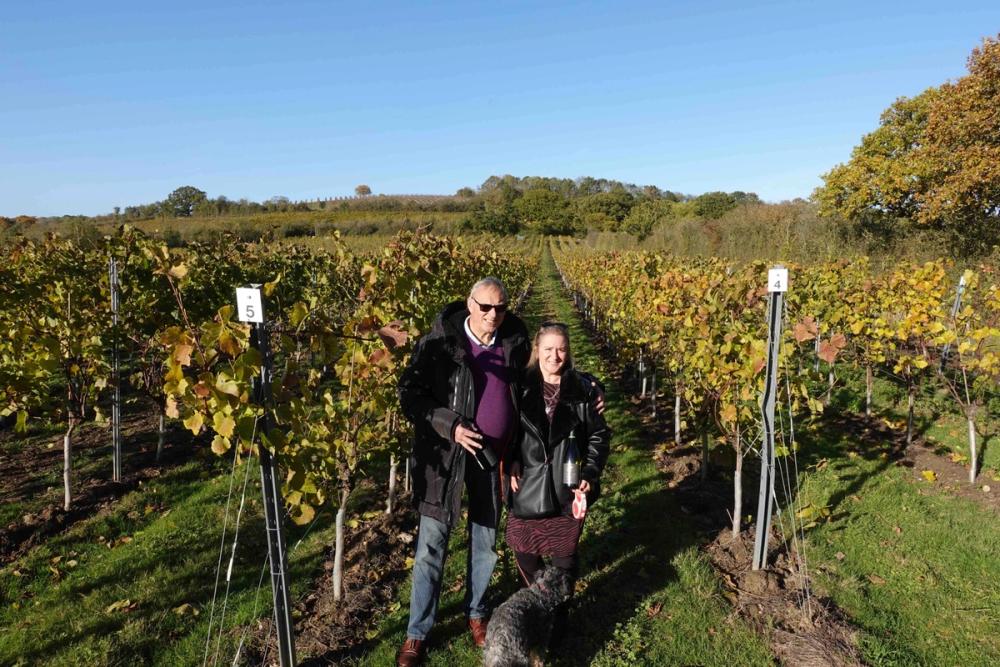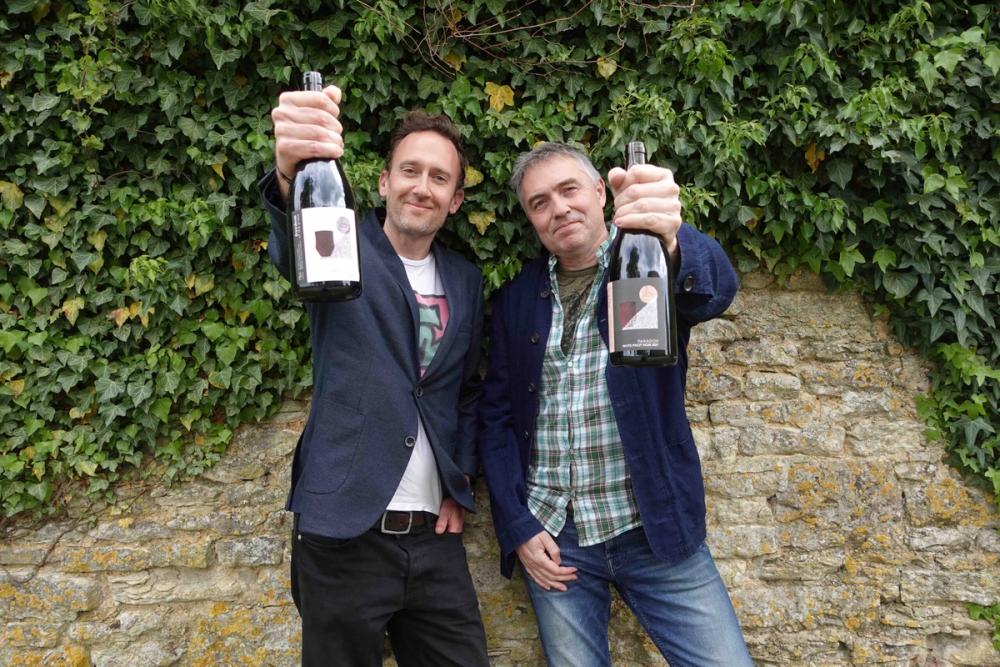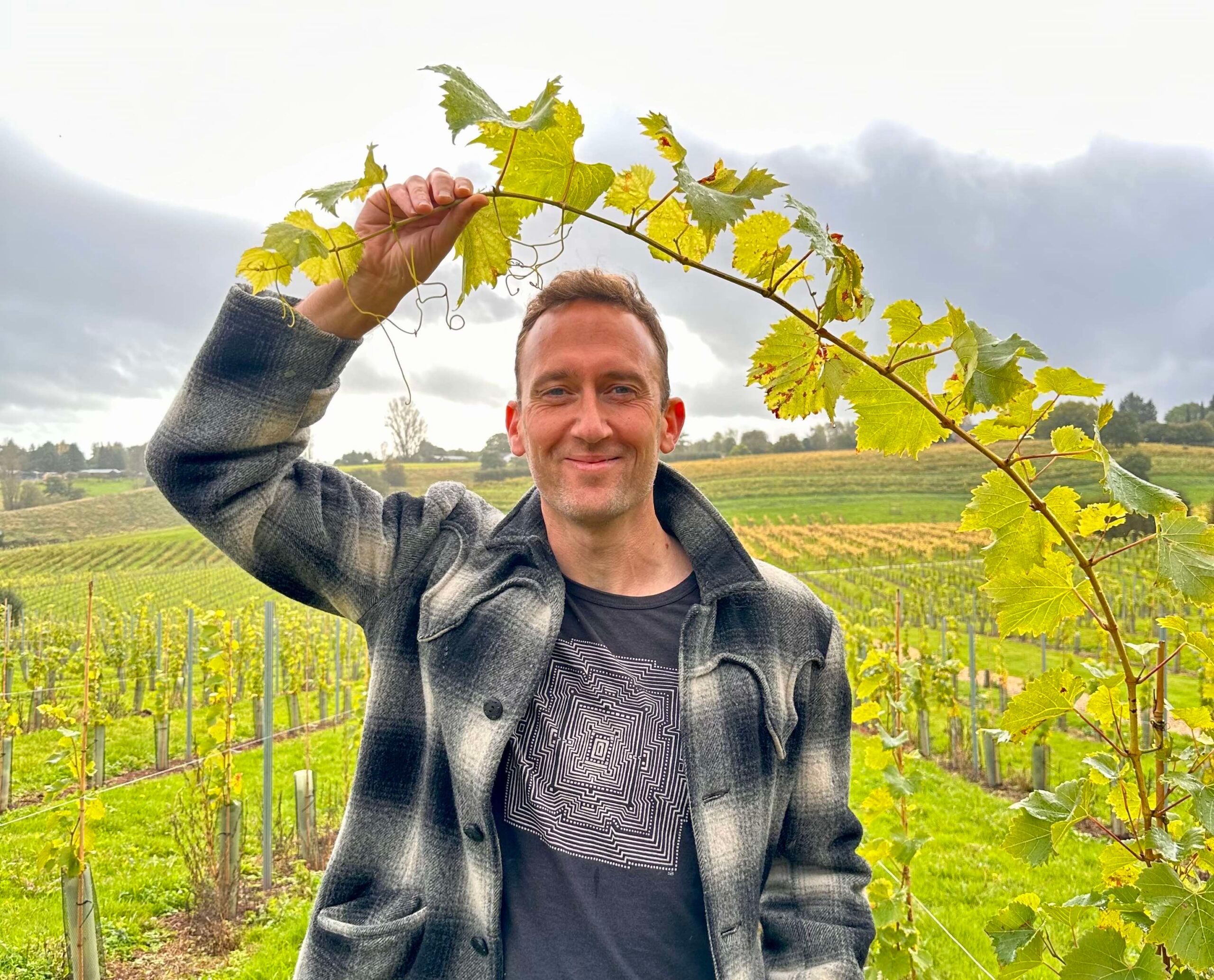As the platform that helps people discover and connect with the best UK winemakers, Marasby visits dozens of UK vineyards and has hundreds of conversations with industry movers and shakers each year. Talks co-founder Simon Huntington has based his three biggest English wine trends on.
English Wine Trend 1: Value
There have been welcome hints in recent months that interest rates may be cut sooner than originally expected. Yet with the cost of living likely to remain high throughout 2024, value will continue to be a key motivator for wine purchasing this year.
So far, so obvious – but what does this mean for English wine? Average UK vineyard yields have tended to be low compared to other countries and the cost of production high. That is why English wines can’t be found hustling for bottom-shelf space alongside low-cost examples from Spain, Sicily, and the Southern Hemisphere.

WineGB is reporting a massive 2023 harvest that is both a huge opportunity and challenge to the English wine industry
Yet value is relative, and Marasby’s sales data demonstrates a clear trend towards better-value wines available from England: still wines retailing sub-£20 and sub-£30 sparkling wines.
Best-selling still wines on the Marasby platform include a red blend from Kent’s Meophams Vineyard and a Bacchus white from Suffolk’s Burnt House – both retailing at well under £20 a bottle. Best-selling sparkling wines include Lyme Bay’s Brut Reserve and Greyfriars’ Sparkling Cuvée, each of which retail well under the £30 mark, and offer fantastic value in comparison with many Champagnes.
While these wines aren’t cheap, they do offer value within the context of English wine. With the large harvest of 2023 likely to mean much better supplies of still wines coming on stream in 2024, those producers who want to shift volume will have to consider pricing carefully.
From a trade perspective, there will be value to be discovered – but you may have to look beyond the biggest producers and most well-known grape varieties to find it.
English Wine Trend 2: Volume

Graham and Caroline Martin say they have not had such a big harvest as 2023 at Martin’s Lane Vineyard in Crouch Valley
The English wine harvest in 2023 was huge. Graham Martin from Martin’s Lane Vineyard in the Crouch Valley told me just after the vintage, “we haven’t had a year with such enormous bunches before. We had bunches that weighed 350g. That’s ridiculous!”
Individual stories like this were backed up by the recently published WineGB Harvest Report, which predicts overall production of 20-22 million bottles from 2023, up 60% from the previous record set in 2018. Of course, many new vineyards have come on stream since 2018, but the figures are still impressive.
While traditional method sparkling wines from this enormous harvest won’t start to impact the market in any real volume in 2024, England’s still wines will start to be released from this spring, and it is great news that there should be more of them about this year.
Great for English wine drinkers, as most of us tend to drink still wines more often than sparkling. But also, great news for producers selling to trade, as there are typically many more spots available to still wines on restaurant lists and the shelves of independent merchants than sparkling.
However, this doesn’t mean that the trade is likely to see huge volumes of English wines suddenly appearing, or big discounts being offered for listings. While producers will undoubtedly have to consider pricing carefully, many have struggled to meet demand in recent years, selling out long before the following vintage was due to be available. This has impacted their ability to build their brand profile and maintain listings. As a result, many have been forced to throttle supplies to trade so that they can keep availability at the cellar door, and release their new wines earlier than they would ideally like.
So just because there is more still wine available, don’t expect producers to be desperate to shift their wines. If anything, they’ll be pleased to have less pressure to juggle stock levels between trade and DTC, and to be able to wait to release wines until they are ready.
English Wine Trend 3: Variation
Despite record volumes, there was a bit of a fly in 2023’s ointment, which was ripeness. Sugar levels in 2023 were lower than average, which isn’t ideal for still wines. Yet acidity was also lower than average, which isn’t ideal for sparkling wines.
So, you may hear a lot of buzz from the UK wine industry this year about 2023’s amazing vintage – and, as we’ve heard, it was amazing in terms of volume. Undoubtedly some excellent wines have also been made, but it wasn’t a repeat of the golden harvest of 2018, where high yields coincided with extremely ripe fruit.
If you’re a trade buyer then, what sort of wines are you likely to find from the 2023 vintage? The answer is that the results will vary enormously, and will come down to decisions taken by individual growers and winemakers. As in Burgundy, getting to know these individual growers and winemakers is crucial.

Simon Huntington with Gavin Carver, owner and winemaker at Freedom of the Press Winery
On the one hand, Gavin Carver of Oxfordshire urban winery Freedom of the Press has radically adjusted his plans for releases in 2024. His ‘house’ style is for richly textured and weighty still wines, which he makes predominantly with fruit sourced from top-quality Essex vineyards like Martin’s Lane.
While he received “really healthy fruit with lovely flavours” in 2023, the lower sugar and acid levels mean that “the wines will need to maintain a delicacy and nuance to compensate for the lesser weight, and maintain fresh fruit flavours to replace acidity”.
Carver adds: “This will impact on decisions about malolactic fermentation, batonnage, and maturation vessels. For example, I’m using no oak in the Pinot Gris (typically about 40%) only concrete egg and stoneware jars.”
The biggest adjustment, however, was the decision to make rosé from his Pinot Noir this year, rather than a red (as in 2o22) or a blanc de noirs (as in 2021). “The flavours were perfect for pink,” says Carver. “Lifted red fruits and rose / violet florals – but the lower body and light colours decided the direction of travel.”
As a result, Carver says he will “be making the pink 2023 available at the same time as the red 2022, or even earlier”.

Henry Sugden, chief executive of Defined Wine, says it has been “business as usual” for most of the growers it works with
On the other hand, Henry Sugden, chief executive of Kent contract winemaker Defined Wine tells us that, for most of his growers, releases this year will be business as usual. Even if “overall the ripeness was down on 2022,” most growers were able to produce their usual stable of cuvées. “Those who were planning for red wines from 2023 generally made them,” he says. This is in contrast the older UK industry approach of “hoping the weather is good enough”.
This is backed up by the experience of Simpsons Wine Estate – seasoned producers for whom 2023 was their eigth vintage. They tell us they will “see just over a 10% increase in our still wine production this year.” A significant increase – but nothing like the game changing 2018 vintage.

Ruth and Charles Simpson of Simpsons Wine Estate say they will have around 10% more still wines this year
With such a new and fast-emerging industry, it is thrilling to witness how UK wine production is developing. 2018 was the first vintage that many producers felt able to make still wines. In just a few years since, growers and winemakers have learnt so much about working with England’s challenging vintage variation that they can now make superb wines year in year out.
As with other cooler-climate wine regions, getting to know individual growers and winemakers is crucial. With so much innovation and individualism in the industry, anyone in the trade will surely be able to find an approach to value, volume, and variation that works for them.
- Simon Huntington is co-founder of Marasby, which helps people to discover the best English winemakers, and buy from them direct at vineyard gate prices. Visit Marasby.com and @marasbygb for more news and views.
































